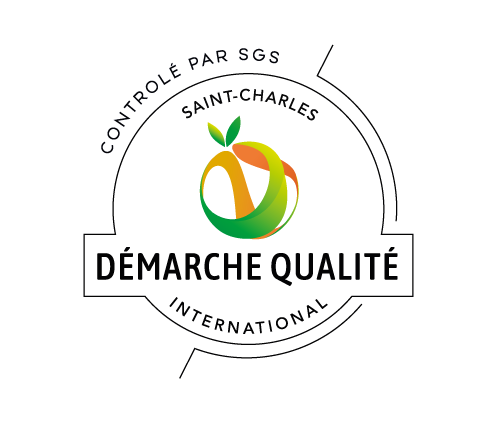The Saint Charles quality approach was launched in 2000 and has continued to grow over the years. Member companies work voluntarily with the goal of enhanced quality control and flawless traceability.
Here the eight key operating principles of this Quality Approach.
 1. Self-audit validated by the DGCCRF
1. Self-audit validated by the DGCCRF
This process involves the practice of a self-audit, by sampling, of approved fruits & vegetables to ensure compliance with standards in force. It has been jointly defined and validated with the Directorate General of Consumption, Competition and Fraud Repression (DGCCRF) with the signing of an agreement in 2000.
For the sake of broad recognition, the “Saint-Charles Quality Approach” was designed to conform with the requirements of the HACCP (Hazard Analysis Critical Control Point) method, a national and international benchmark in the agri-food sector.
All staff of the signatory countries have received initial training and each year since 2000 have received further training at the beginning of the campaign. More than 100 Inspectors/Certifiers participate daily in setting up and applying the “Saint-Charles Quality Approach” within their company..

Creating a quality logo generally affixed on trade documents and packages attests to compliance with self-regulation procedures. An Accreditation Number recognized by the DGCCRF is thereby assigned to each signatory company.
Each company engaged in the “Saint-Charles Quality Approach” establishes, for each campaign, a sampling plan correlated with the volumes and products processed, validated by the DGCCRF, and conducts its health analyses (“screening” method for over 280 active materials) with the CAMP Departmental Analysis Laboratory, COFRAC accredited, in agreement with the SNIFL (National Association of Importers/Exporters of Fruits and Vegetables). This unique partnership set up with the CAMP lets SNIFL centralise all information related to health quality of fruits and vegetables passing through the site.
The principle is as follows:
Any non-conformity detected by the Laboratory is immediately forwarded, copied, to the SNIFL services. This transparency, validated by the signatory companies, lets the Quality Manager send a reminder of the regulatory procedures to be respected to the company concerned, as well as making direct contact with the “Quality” managers of the companies in order to define the monitoring operations to be implemented.
Since April 2013, beyond existing on-going training of “Quality” personnel, additional in-company group training on the formalisation of the HACCP Approach to validate existing and provide training in good health practices for all personnel of signatory companies..
In February 2013 the SNIFL hired a “Quality Manager”, a Quality benchmark available to signatories of the agreement, to assist them and support them individually in carrying out their obligations. She also provides, through her function with each company, “quality pre-audits” as part of continuing education, and is the liaison with the Administration, the Laboratory and all signatorie.
On the basis of details found by the Quality Manager during company audits with the goal of continuously verifying compliance by each of them with the commitment, the professionals decided with the DGCCRF’s agreement to set up a “Quality” commission composed of “involved business leaders” to ensure the sustainability of this Label and penalise any violation.